Rutuja Gurav
Multivariate Time Series Clustering for Environmental State Characterization of Ground-Based Gravitational-Wave Detectors
Dec 13, 2024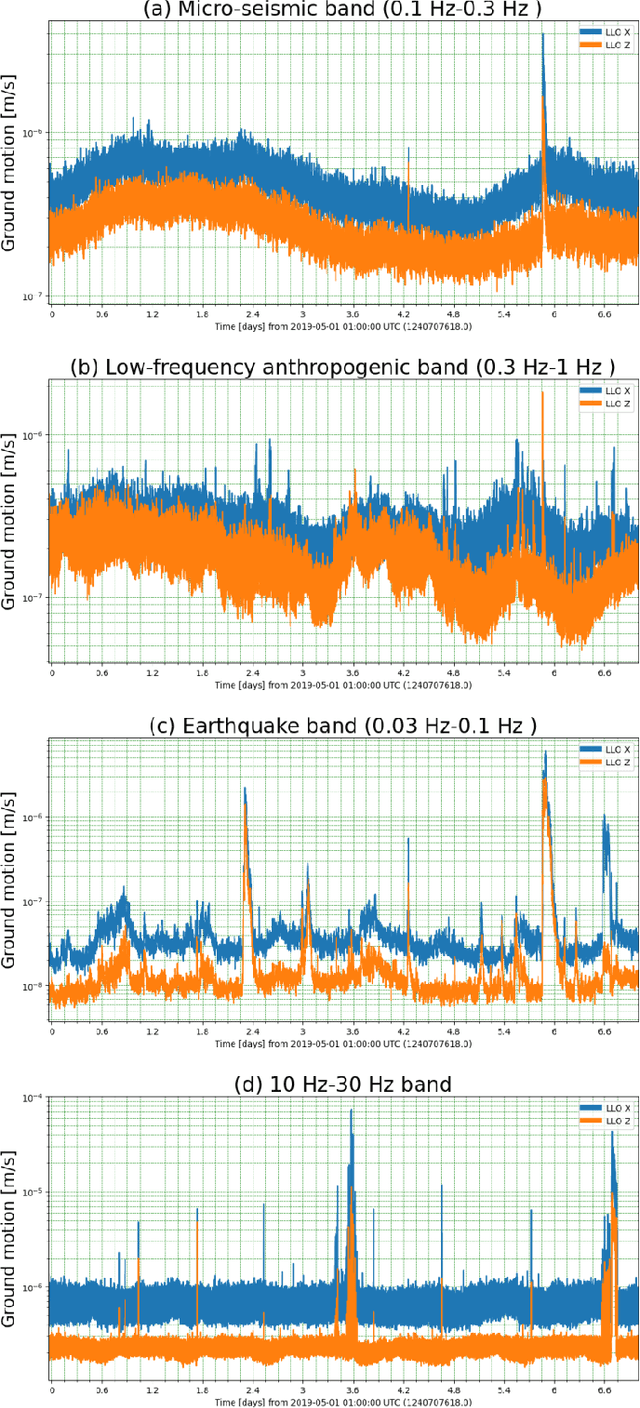
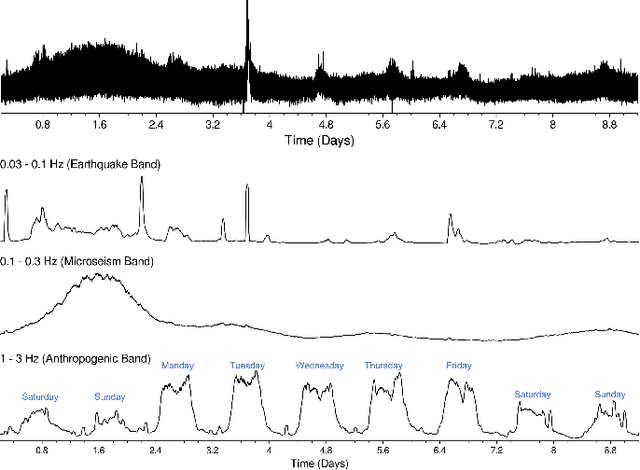
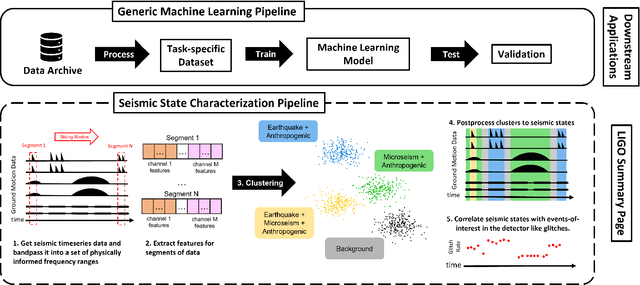
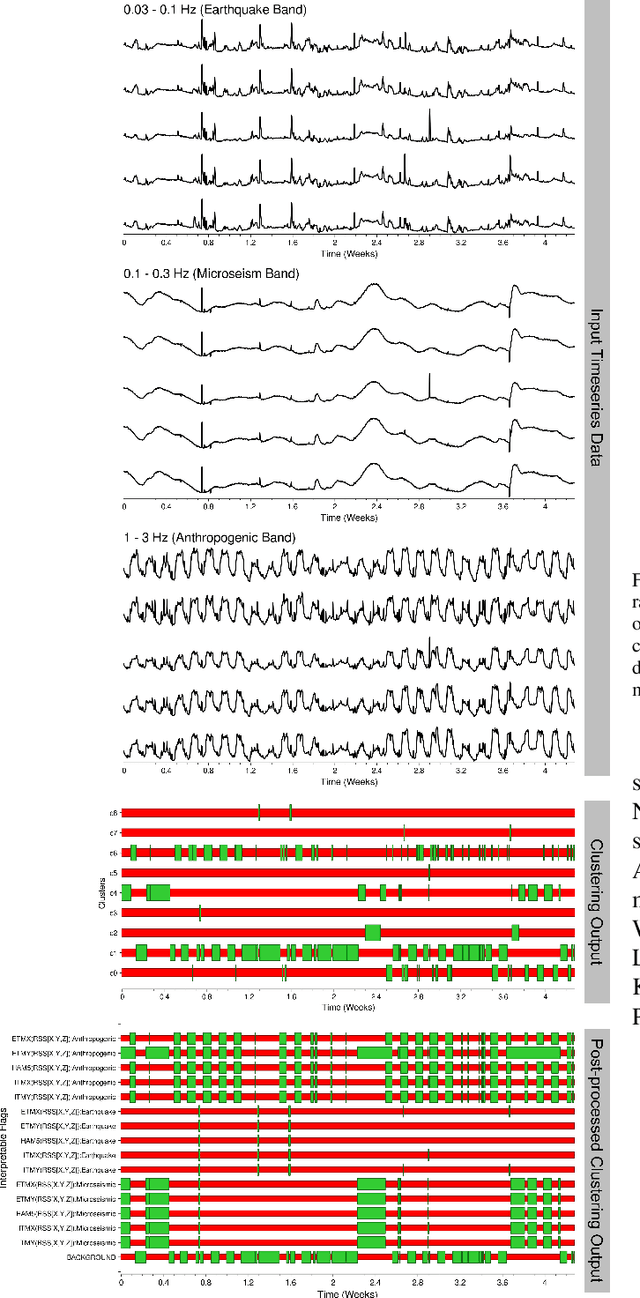
Abstract:Gravitational-wave observatories like LIGO are large-scale, terrestrial instruments housed in infrastructure that spans a multi-kilometer geographic area and which must be actively controlled to maintain operational stability for long observation periods. Despite exquisite seismic isolation, they remain susceptible to seismic noise and other terrestrial disturbances that can couple undesirable vibrations into the instrumental infrastructure, potentially leading to control instabilities or noise artifacts in the detector output. It is, therefore, critical to characterize the seismic state of these observatories to identify a set of temporal patterns that can inform the detector operators in day-to-day monitoring and diagnostics. On a day-to-day basis, the operators monitor several seismically relevant data streams to diagnose operational instabilities and sources of noise using some simple empirically-determined thresholds. It can be untenable for a human operator to monitor multiple data streams in this manual fashion and thus a distillation of these data-streams into a more human-friendly format is sought. In this paper, we present an end-to-end machine learning pipeline for features-based multivariate time series clustering to achieve this goal and to provide actionable insights to the detector operators by correlating found clusters with events of interest in the detector.
Can SAM recognize crops? Quantifying the zero-shot performance of a semantic segmentation foundation model on generating crop-type maps using satellite imagery for precision agriculture
Dec 04, 2023Abstract:Climate change is increasingly disrupting worldwide agriculture, making global food production less reliable. To tackle the growing challenges in feeding the planet, cutting-edge management strategies, such as precision agriculture, empower farmers and decision-makers with rich and actionable information to increase the efficiency and sustainability of their farming practices. Crop-type maps are key information for decision-support tools but are challenging and costly to generate. We investigate the capabilities of Meta AI's Segment Anything Model (SAM) for crop-map prediction task, acknowledging its recent successes at zero-shot image segmentation. However, SAM being limited to up-to 3 channel inputs and its zero-shot usage being class-agnostic in nature pose unique challenges in using it directly for crop-type mapping. We propose using clustering consensus metrics to assess SAM's zero-shot performance in segmenting satellite imagery and producing crop-type maps. Although direct crop-type mapping is challenging using SAM in zero-shot setting, experiments reveal SAM's potential for swiftly and accurately outlining fields in satellite images, serving as a foundation for subsequent crop classification. This paper attempts to highlight a use-case of state-of-the-art image segmentation models like SAM for crop-type mapping and related specific needs of the agriculture industry, offering a potential avenue for automatic, efficient, and cost-effective data products for precision agriculture practices.
Identifying Misinformation from Website Screenshots
Feb 15, 2021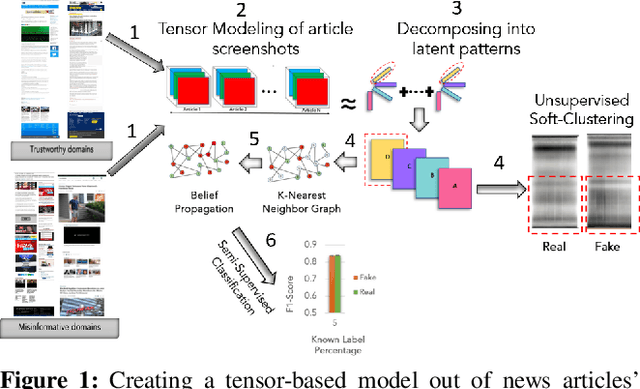


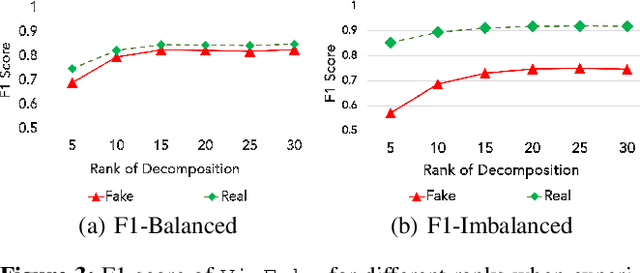
Abstract:Can the look and the feel of a website give information about the trustworthiness of an article? In this paper, we propose to use a promising, yet neglected aspect in detecting the misinformativeness: the overall look of the domain webpage. To capture this overall look, we take screenshots of news articles served by either misinformative or trustworthy web domains and leverage a tensor decomposition based semi-supervised classification technique. The proposed approach i.e., VizFake is insensitive to a number of image transformations such as converting the image to grayscale, vectorizing the image and losing some parts of the screenshots. VizFake leverages a very small amount of known labels, mirroring realistic and practical scenarios, where labels (especially for known misinformative articles), are scarce and quickly become dated. The F1 score of VizFake on a dataset of 50k screenshots of news articles spanning more than 500 domains is roughly 85% using only 5% of ground truth labels. Furthermore, tensor representations of VizFake, obtained in an unsupervised manner, allow for exploratory analysis of the data that provides valuable insights into the problem. Finally, we compare VizFake with deep transfer learning, since it is a very popular black-box approach for image classification and also well-known text text-based methods. VizFake achieves competitive accuracy with deep transfer learning models while being two orders of magnitude faster and not requiring laborious hyper-parameter tuning.
 Add to Chrome
Add to Chrome Add to Firefox
Add to Firefox Add to Edge
Add to Edge